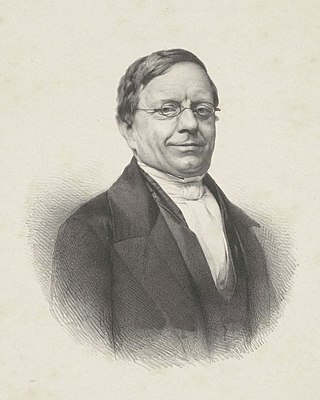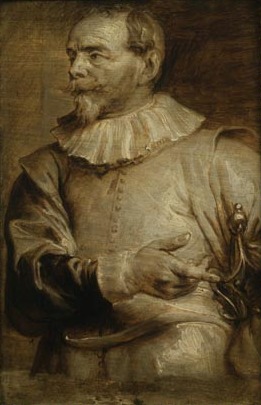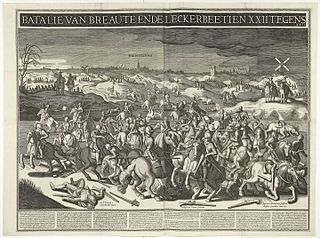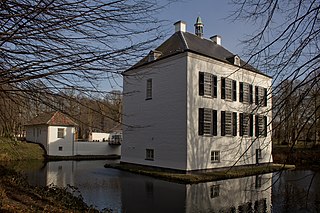
Abraham Jacob van der Aa was a Dutch writer best known for his dictionaries, one of notable people and the other of notable places in the Netherlands.

Sebastiaen Vrancx, Sebastiaan Vrancx or Sebastian Vranckx was a Flemish Baroque painter, draughtsman and designer of prints who is mainly known for his battle scenes, a genre that he pioneered in Netherlandish painting. He also created landscapes with mythological and allegorical scenes, scenes with robbers, village scenes and celebrations in cities. He was a gifted figure painter who was regularly invited to paint the staffage in compositions of fellow painters. As an active member of a local chamber of rhetoric, he wrote comedies and a number of poems. He was further captain of the Antwerp civil militia schutterij.

Mont-Saint-Jean is a hamlet located in Wallonia in the province of Walloon Brabant, Belgium, south of Waterloo located partly on Waterloo and partly on Braine-l'Alleud where the National road (N5) going from Brussels to Charleroi crosses the National road (N234) going from Nivelles to Leuven.

The Diocese of 's-Hertogenbosch is a Latin Church ecclesiastical jurisdiction or diocese of the Catholic church in the Netherlands. The modern diocese was created in 1853. It is a suffragan of the archdiocese of Utrecht. It is currently led by bishop Gerard de Korte. Its see is St John's Cathedral, 's-Hertogenbosch.

The siege of Antwerp took place after fighting in the Belgian Revolution ended. On 15 November 1832, the French Armée du Nord under Marshal Gérard began to lay siege to the Dutch troops there under David Chassé. The siege ended on 23 December 1832. The French had agreed with the Belgian rebels that the latter would not participate in the battle.

AnthonieSchetz, was a military commander in Spanish service during the Eighty Years' War. He was baron of Grobbendonk, lord of Tilburg and Goirle, Pulle and Pulderbos, and Wezemaal. He was the military governor of 's-Hertogenbosch until the town was lost to the Dutch in 1629, captain of a cavalry regiment, and a knight of the order of Santiago.
Willebois was a Dutch jonkheer and politician affiliated with the General League of Roman Catholic Caucuses. He was mayor of 's-Hertogenbosch and member of the Senate.

The siege of Eindhoven, also known as the capture of Eindhoven of 1583, took place between 7 February and 23 April 1583 at Eindhoven, Duchy of Brabant, Spanish Netherlands during the Eighty Years' War and the Anglo-Spanish War (1585–1604). On 7 February 1583 a Spanish force sent by Don Alexander Farnese, Governor-General of the Spanish Netherlands, commanded by Karl von Mansfeld and Claude de Berlaymont, laid siege to Eindhoven, an important and strategic city of Brabant held by Dutch, Scottish, and French soldiers under the States' commander Hendrik van Bonnivet. After three months of siege, and the failed attempts by the States-General to assist Bonnivet's forces, the defenders surrendered to the Spaniards on 23 April.
The following is a timeline of the history of the municipality of 's-Hertogenbosch, Netherlands.

Gerard Abrahams van Houwelingen, known as Lekkerbeetje ("sweet-tooth") was a Brabantine cavalry officer in the armies of the Dutch Republic and later in the Army of Flanders.

Piere de Bréauté, lord of Bréauté (1580–1600) was a nobleman from Normandy who died at the age of 19 as a cavalry captain in the service of the Dutch Republic, in a cavalry duel known as the Battle of Lekkerbeetje.

Het Noordbrabants Museum is an art museum in 's-Hertogenbosch, Netherlands.

Gaspar Schetz (1513–1580), Lord of Grobbendonk, Hereditary Marshal of Brabant was a financier and statesman in the Habsburg Netherlands. For reasons that are unknown he was nicknamed "Corvinus".
Events in the year 1600 in the Spanish Netherlands and Prince-bishopric of Liège.

Fort Crèvecoeur was a Dutch fortress near 's-Hertogenbosch. It is now used as a military exercise terrain.

Loon op Zand Castle, is a castle in Loon op Zand, in the Dutch province of North Brabant. The current building looks like a manor, but is actually the keep of a medieval castle.

Empel en Meerwijk Castle was a medieval castle just north of 's-Hertogenbosch. All that's left is a terrain where the castle outlines have been visualized.

Andreas Johannes Ludovicus baron van den Bogaerde van Terbrugge was a Dutch nobleman, politician, author and art collector. He served as Governor of North Brabant between 1830 and 1842.

Dominicus Franciscus du Bois was a Flemish artist and draughtsman. From 1826, he directed the Royal School for Applied and Visual arts in 's-Hertogenbosch.
Frederik Sirtema van Grovestins was a Frisian officer in the Dutch States Army. He advanced through the various ranks in the army, from captain and cavalry captain (Ritmeester) to lieutenant-general of cavalry. Furthermore, he became general-quarter-master of the army and colonel of a regiment on foot at the repartition of Zeeland. In 1712 he became governor of Bouchain, in 1718 of Bergen-op-Zoom. He was an outstanding cavalry commander who played an important role in various campaigns and battles. He also was an excellent military theorist, who stressed to the cavalry of the Allies to seek their strength in combat with the bladed weapon, something that possibly influenced Friedrich Wilhelm von Seydlitz when he developed the Prussian cavalry later in the 18th century.
















